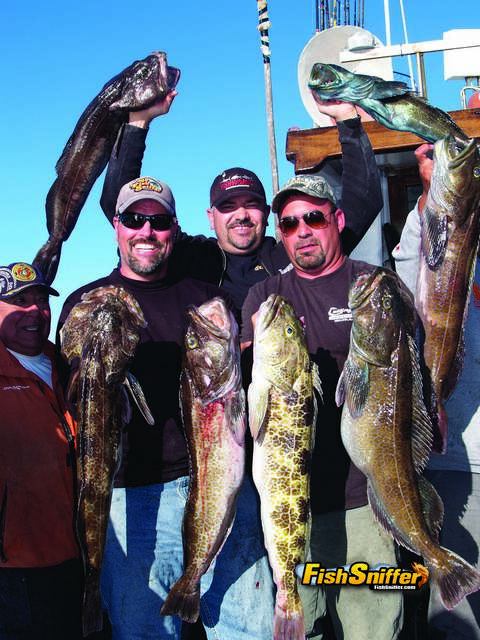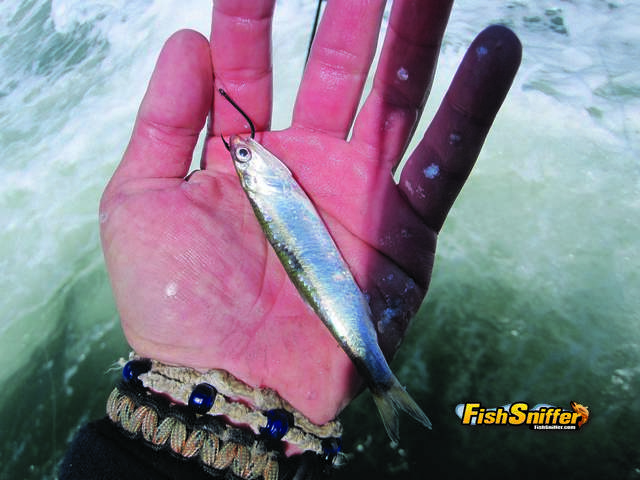Right here at the beginning I admit that I’m not an expert lingcod fisherman. While I do catch my share of lings ranging from small to large, I’m still learning and still experimenting to determine what works, what doesn’t work and what works best.
I’ve been on this case for most of my life. In the balance of this column I’ll share what I’ve learned and I think my conclusions will help you catch more and bigger lingcod.
Working jigs and swimbaits, that’s the iconic way to catch lings and that’s how most of us avid ling anglers want to catch our fish. Pitch that sexy jig up drift, let it sink, start yo yoing it along the bottom and when Mr. Ophiodon Elongatus comes knocking he’ll do his best to rip the rod from your hands.
There’s no doubt about it, nothing in the world of bottom fishing compares to the excitement of jigging for lings, but the problem is that jigs don’t always work. If the water temperature has dropped or is too chilly, if there has been a lot of fishing pressure or if you are fishing shallow water hooking lingcod on artificial baits can be an uphill climb.

I read a study conducted in British Columbia, where the lingcod get a lot bigger than they do here in Northern California, but they behave in much the same way as our fish do. Using rods and reels and baits and lures teamed with underwater cameras, the researchers observed how lingcod react to various fishing methods.
What the researchers found was that lingcod are the most curious fish living on the rocky reefs. When they lowered a bait, lure or even sinker to the bottom one or more lingcod quickly surrounded the alien visitor. Most of time the lings didn’t strike, but they gave the offering up close and personal scrutiny.
To coax a strike using an artificial lure even under the best of conditions the lure had to move quickly and erratically. Apparently at times lings like to chase down their prey and at these times a briskly worked jig or swimbait will produce reaction strikes. Yet based on hundreds of observations the researchers concluded that the very best lingcod offering was live bait, followed by dead natural baits, with jigs and swimbaits coming in a distant third.
I’m an avid jigger and I’ve written about jigging for lings in the pages of the Fish Sniffer numerous times. Most guys that regularly target lings have a solid selection of jigs and have a thorough understanding of how to employ them. This being the case, I’m going to steer this discussion to the natural bait side of the isle.
When the going gets tough and it’s time to break out the live bait or frozen bait, the first thing you want to do is put that light responsive jigging rod in the rack. When fishing natural bait for lings, you want a stout rod that has some play in the tip followed up with lots of backbone. The rod should be topped with a rugged reel spooled with braided line in the 65 to 80 pound class.
My rod of choice for this work is a plain Jane Ugly Stik Tiger. I’ve teamed the rod with a Penn Baja Special reel spooled with 65 pound braid. While this rod is rated for weights up to 3 ounces, that must refer to casting weight, because I routinely use sinkers up to 32 ounces without a problem.

While I’m pretty sure I could move a parked Volkswagen on a hook set using this rig, the tip of the rod is pretty soft and that’s important. When a ling takes your bait, you don’t want to react immediately. The proper procedure is to let the fish take the rod tip down, then work the reel handle to take up any slack and draw the tip down even more. Only then do you want to thumb the reel and cross the fish’s eyes.
I’ve found that if I use a rod that’s too stiff in the tip, the up and down motion of the boat will pull the bait away from the fish before they have a chance to really clamp down on it. Sometimes they’ll come back and hit it again, but many times they won’t.
Before we get into the baits to use, I’ll go over the proper rig for fishing the baits. Basically you’ll be using the same type of three way set up that you use for live bait drifting inside and outside San Francisco Bay with a couple important differences.
Rather than running a 30 pound test leader tipped with a single live bait hook, you’ll want to employ a “trap leader” constructed of 50 pound test monofilament.

To set up a trap leader take a 36 inch piece of 50 pound mono and attach a 4/0 octopus hook to it using a sliding snell knot. On the end of the leader tie on a 5/0 or 6/0 4x strong treble hook via a perfection loop knot. The treble is inserted into the tail end of the bait while the octopus is pinned through the bait’s nose. The sliding snell on the octopus hook allows you to adjust the distance between the two hooks to accommodate baits of various sizes.
The best live baits to employ for lings are sardines and mackerel when you can get them. Pretty much any other small live fish that you can legally use as live bait, including kingfish, large bullheads and sanddabs will work. As a general rule, live baits in the 10 to 12 inch class work best. They appeal to average size lings, but are still large enough to draw strikes from the big boys.
If you can’t get live bait, frozen sardines, mackerel, squid and octopus can be used. The main difference between using live bait and dead bait comes in the presentation. When using live bait all you need to do is keep your rig within a foot or two of the bottom. The live bait will swim along and avoid snags. When a ling approaches the bait fish, it will go crazy trying to escape and the ling will engulf it.
Dead baits, being dead don’t avoid snags. When fishing them you have to account for the length of the leader and keep them 3 to 4 feet off the bottom. If a dead bait drags, at a minimum the bait will get torn up and as often as not the treble hook will find a snag.

When I’m fishing with live baits I don’t move the bait at all, I just feel for the bottom a couple time per minute to make sure I’m in the strike zone. With dead baits I still feel for the bottom often, but every minute or two I reel the bait up 20 to 25 feet off the bottom. My theory is that if there is a ling eyeballing my bait and it suddenly starts for the surface it forces the ling to strike the bait or let it get away. Many times I’ll bring a dead bait 8 or 10 cranks off the bottom and then I’ll feel something grab the bait. At that point I stop reeling and let the fish turn for the bottom before setting the hook.
A final piece of advice is to use plenty of weight when bait fishing for lings. You want your line as close to vertical as possible. I never use less than a pound and at times I go with 2 pounds of weight to keep my line going straight down.
